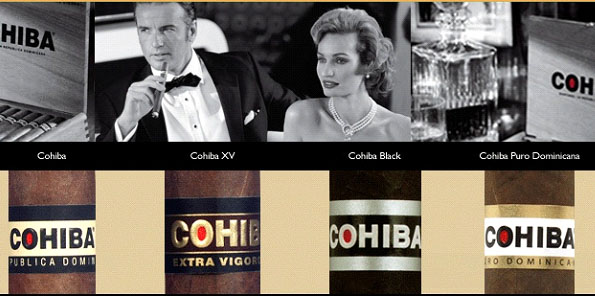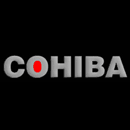Cigars - Cohiba Cigars

 |
The origin of the word Cohiba is on the name the Cuban aborigines gave to the rustic roll they prepared with its leaves. At the arrival of Colombus in 1492 they already knew and used the tobacco plant. |
The tobacco used for the manufacturing of this line is very special. The Cohiba is not a major production, considering it is a particular Habano. It is very limited due to the quality of the harvest.
Cohiba Cigars |
The tobacco is harvested in Fine Vegas (plantations), selected in Vuelta Abajo, Pinar del Rio province). Especially in the Vegas el Corojo is produced a soft cape of a fine texture and light color. |
In terms of the fillers, it uses the best leaves of the best fine sunny plantations in Pinar del Rio, from san Luis and San Juan. Another of the characteristic of the Cohiba is the so called "third fermentation". It consists in a special process of slight fermentation and aging.
The modern day Cohíba popularity began with the cigars smoked by a bodyguard of Fidel Castro's named Bienvenido "Chicho" Perez. Castro noticed he often smoked a "very aromatic, very nice" cigar. When asked by Castro what brand he smoked, he replied that it was rolled by a friend of his who would give him some of these special cigars as gifts.
The man in question was a cigar roller working at the La Corona factory in Havana named Eduardo Rivera. Castro approached Rivera about rolling cigars for him personally and set him up with five other rollers in a former diplomatic mansion in a suburb of Havana known as El Laguito (Spanish for "the little lake"). Later, the factory became the first cigar factory to be staffed entirely by women torcedoras (cigar rollers). Historically, security at the factory was tightly regulated, with only designated officials and workers allowed entry into the most critical work areas of the factory.
The cigars were reserved for Castro and other high-ranking Cuban officials, and were often presented to foreign dignitaries as gifts. Additionally, with rumors and fears of a CIA assassination attempt running rampant, it made sense for Castro to smoke only cigars that were manufactured under extremely secure and secretive conditions. (The CIA had allegedly contemplated using exploding cigars as a means of assassinating Castro). Castro himself is said to be particularly fond of the long, thin cigars rolled for him, especially the sizes that would become the Lancero and Corona Especial.
Castro decided to release his personal cigars as a premium cigar brand for public consumption when the 1982 World Cup was held in Spain. When first launched in 1982 the Cohíba marque consisted of three vitolas or sizes: the Panetela, the Corona Especial, and the Lancero. In 1989 three more vitolas, the Robusto, the Exquisito, and the Espléndido, were added; the six are referred to as the Línea Clásica (classic line).
The History:
Five centuries after Christopher Columbus heard the word Cohiba for the first time in the Dominican Republic, a Cohiba cigar was developed in the same country by Diaz y Cia in l978. The Dominican Cohiba cigar, which was reformulated in the 1990s, is the only Cohiba cigar that can be purchased legally in the United States.
The Cigar:
The Cohiba cigar that is crafted today in the Dominican Republic took years to develop. The dark, rich wrapper leaf is grown in the sub-tropical West African climate of Cameroon. The supple and flavorful Jember binder is grown in Indonesia. To balance the richness of the wrapper, the smooth-smoking Piloto Cubano filler leaves are grown in the Dominican Republic.
The Experience:
The Dominican Cohiba is a deeply satisfying cigar, rich in flavor and history that does not overpower the smoker.
Arguably the most famous CUBAN brand cigars worldwide, this Dominican product is medium-to-full-bodied with an easy draw and even burn. Cohiba cigars provide smooth tobacco flavor with some curious spice and light wood elements. It is definetely one of the most popular cigars we offer.
Cohiba Cigar Facts• Wrapper: Cameroon |
